Want to make a flavorful Indian curry or a healthy golden latte in no time? This turmeric paste is the time saver hack you searched You can make it in minutes, store it in a pot and have it ready for all your delicious creations!
Turmeric paste is usually made from pureed turmeric root and is an intense yellow-orange, almost golden color. And that’s why it’s called golden paste.
Golden paste is amazing multitasking You can use it for virtually any dish, from curries, marinades and stir-fries to smoothies, casseroles and hot drinks like herbal teas and lattes.
Simply dissolve half a teaspoon or a teaspoon of the paste in sizzling oil, boiling broth, or hot milk and enjoy.
Our turmeric paste recipe is inspired by traditional Indian curry pastes, where ingredients like ginger root and spices are pounded in a mortar into a raw mixture.
To make it easier, we used a blender to puree and cook turmeric powder instead of the fresh root.
Turmeric powder is made from the dried, ground root and is cheaper, easier to find, and just as healthy!
So we mixed turmeric with a dash of water, a pinch of salt, etc ginger root for volume, flavor and added goodness.
Then we top it off with black pepper and a few teaspoons of coconut oil. Pepper and fats are two well-known ones absorption enhancer of curcumin, the active ingredient in turmeric!
And to thicken the paste, we just strained it through a sieve to remove excess juice – no cooking needed.
This speeds up the formulation and helps retain many valuable antioxidants!
Yes, turmeric and ginger are packed with antioxidants and have them too powerful anti-inflammatory agent Effects.
Just a teaspoon of this turmeric paste is enough powerful health boost while adding flavor to your dishes!
frequently asked Questions
What is turmeric paste?
Turmeric paste is a raw puree made from fresh turmeric root, but can also be prepared with turmeric powder.
Turmeric is usually pounded or mixed into a paste with other ingredients like ginger and water, as well as black pepper and oil.
How do you use turmeric paste?
Use ginger turmeric paste as a flavorful base in Indian and Southeast Asian dishes like curries, stir-fries, sauces and marinades to add a peppery, earthy flavor and deep golden color.
Typically you will need a teaspoon of gold paste per person.
Turmeric paste is also good for making healthy drinks like an antioxidant smoothie, a calming herbal tea, and an anti-inflammatory golden latte.
What is turmeric paste good for?
Made from concentrated turmeric root, turmeric paste can act as a dietary supplement with powerful anti-inflammatory and antioxidant properties.
A teaspoon of turmeric paste a day can help fight inflammation (particularly chronic low-level inflammation and joint inflammation associated with arthritis) and also prevent age-related diseases.
In addition, turmeric paste is also a good dietary supplement for a healthier brain, gut, and immune system.
Can you eat turmeric paste raw?
You don’t have to cook turmeric paste to eat it: so you can eat it raw as long as you combine it with black pepper and a source of fat for better absorption.
However, raw ginger turmeric paste can taste quite pungent, peppery, and earthy, which can make you uncomfortable.
Cooking the paste in a curry or dissolving it in hot water or milk can help moderate the pungent taste.
Do you make turmeric paste with the powder or fresh turmeric?
Similar to ginger puree, turmeric paste is usually made from fresh turmeric root, crushed in a mortar, or blended into a paste.
However, you can also make turmeric paste with turmeric powder, which is cheaper and easy to get and just as healthy.
Two teaspoons of turmeric powder equals 15 grams or 1/2 ounce of fresh root.
If you use the powder, like in this recipe, you’ll need a few extra ingredients (like water, ginger, and oil) to add bulk.
How to make golden latte with turmeric paste?
How to prepare golden milk with turmeric paste:
-
Heat 200ml of milk (dairy or non-dairy) in a saucepan
-
Mix in half a teaspoon of paste and simmer gently
-
Optionally add some ground cinnamon, cloves or cardamom
-
Sweeten to taste and serve with frothed milk if you like
Do you need coconut oil for turmeric paste?
Coconut oil is not required for turmeric paste as it is simply used as an additive to promote curcumin absorption from turmeric.
Since you typically consume turmeric paste in a curry or latte that already contains a fat source, you can omit the coconut oil and keep the paste recipe oil-free.
If you choose to use oil instead, you can substitute other vegetable oils for coconut oil, such as avocado or flaxseed oil, and use about a teaspoon for a small pot of paste.
Ingredients
| Raw ginger root | 120g |
| turmeric powder | 2 tbsp |
| Salt | 2 pinches |
| Ground black pepper | 1/4 tsp |
| Water | 100ml |
| Melted coconut oil (optional) | 2 Tea spoons |
Step 1
Rinse the ginger root well to soften the outer skin and peel off with the tip of a spoon (or a knife or vegetable peeler).
Then roughly chop the peeled ginger.
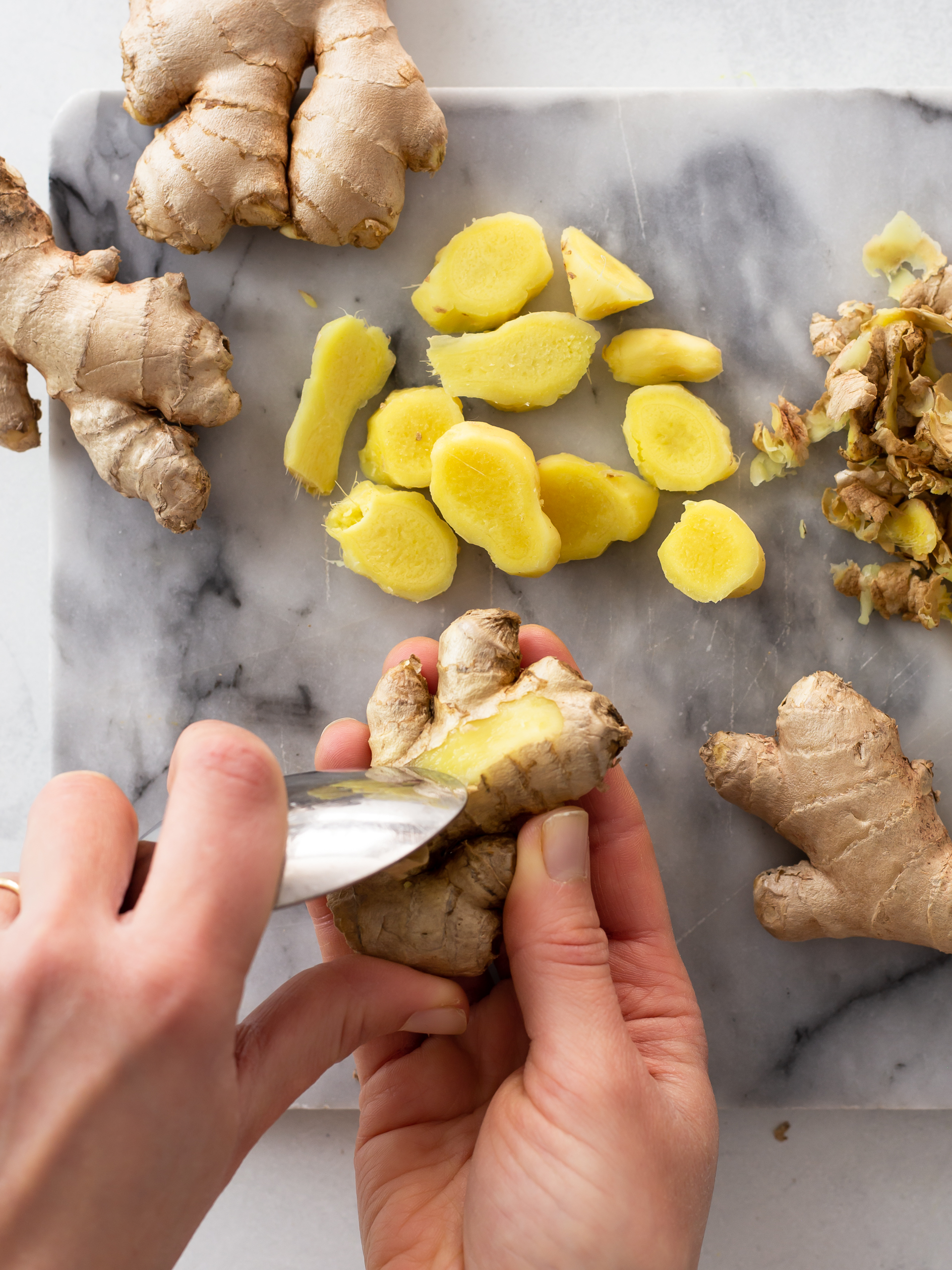
step 2
Place the prepared ginger in a high-powered blender or food processor and add the turmeric powder, salt, black pepper, and water.
Blend all ingredients long enough to form a deep orange-gold paste that is as smooth as possible.
You may need to use a spatula to scrape the sides of the mixing bowl a few times between the legumes to pick up any large chunks of ginger.
At this point, the turmeric paste will be a little runny since you used water (but water helps mix it more smoothly).
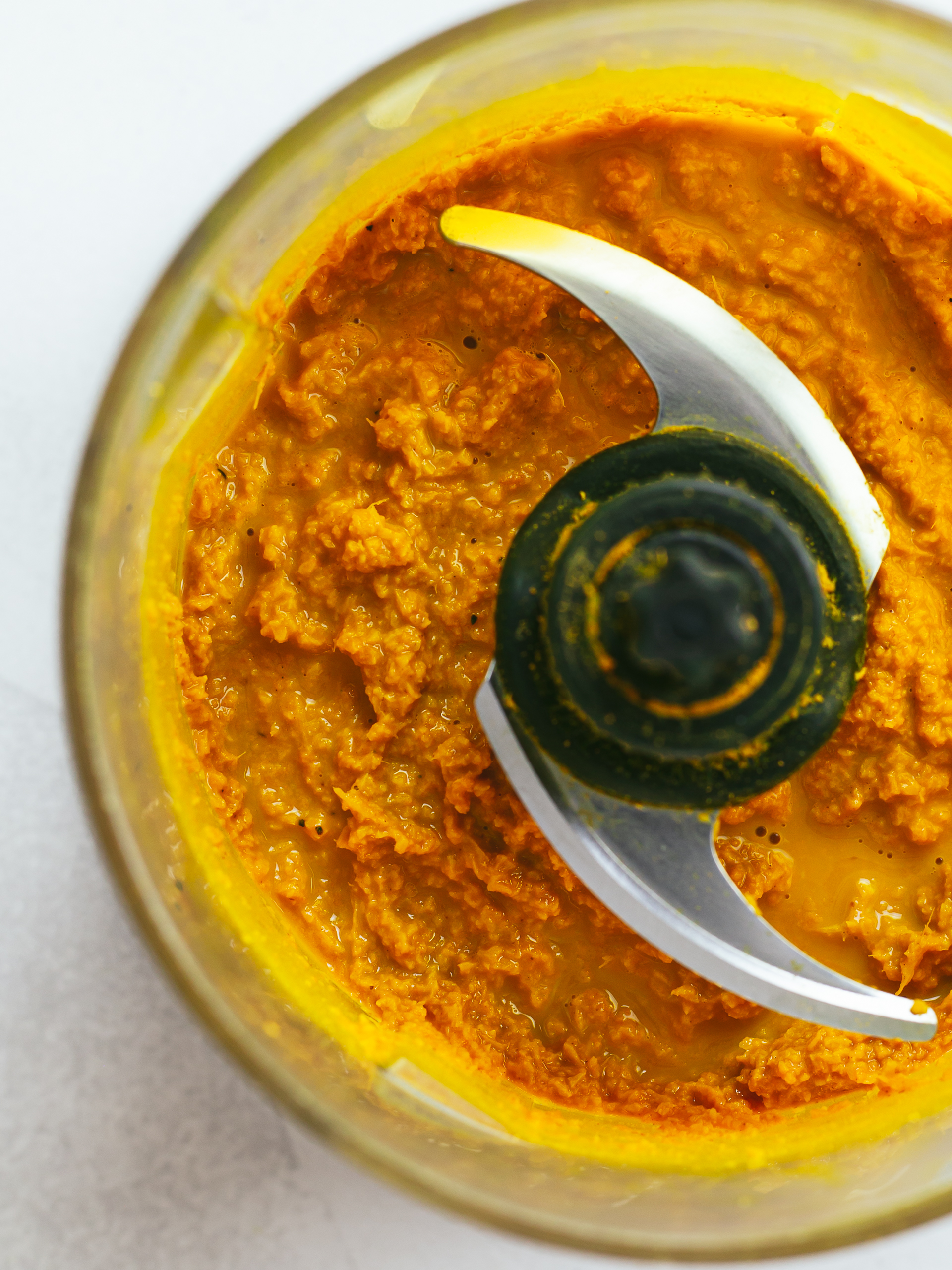
step 3
To remove excess water and make the paste more compact and spoonable, strain the turmeric paste through a fine-mesh sieve and squeeze out the pulp with the back of a spoon.
Catch the juice in a cup, but don’t throw it away! You can dilute it with lemon and orange juice for a healthy turmeric shot.
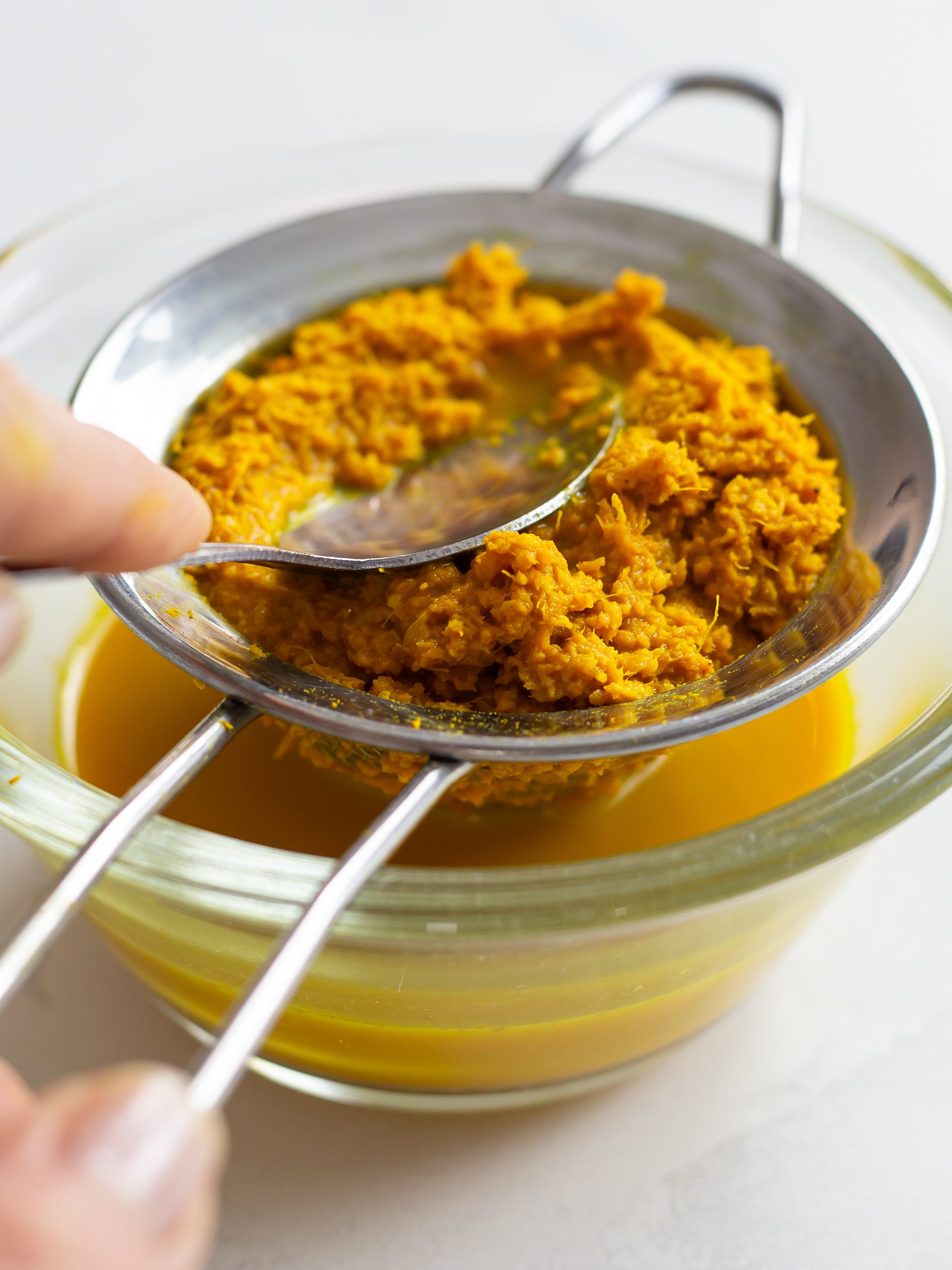
step 4
Pour the golden paste into a cup or jar, add melted coconut oil and stir until fully incorporated.
Coconut oil contains fats that promote turmeric absorption, but it is optional.
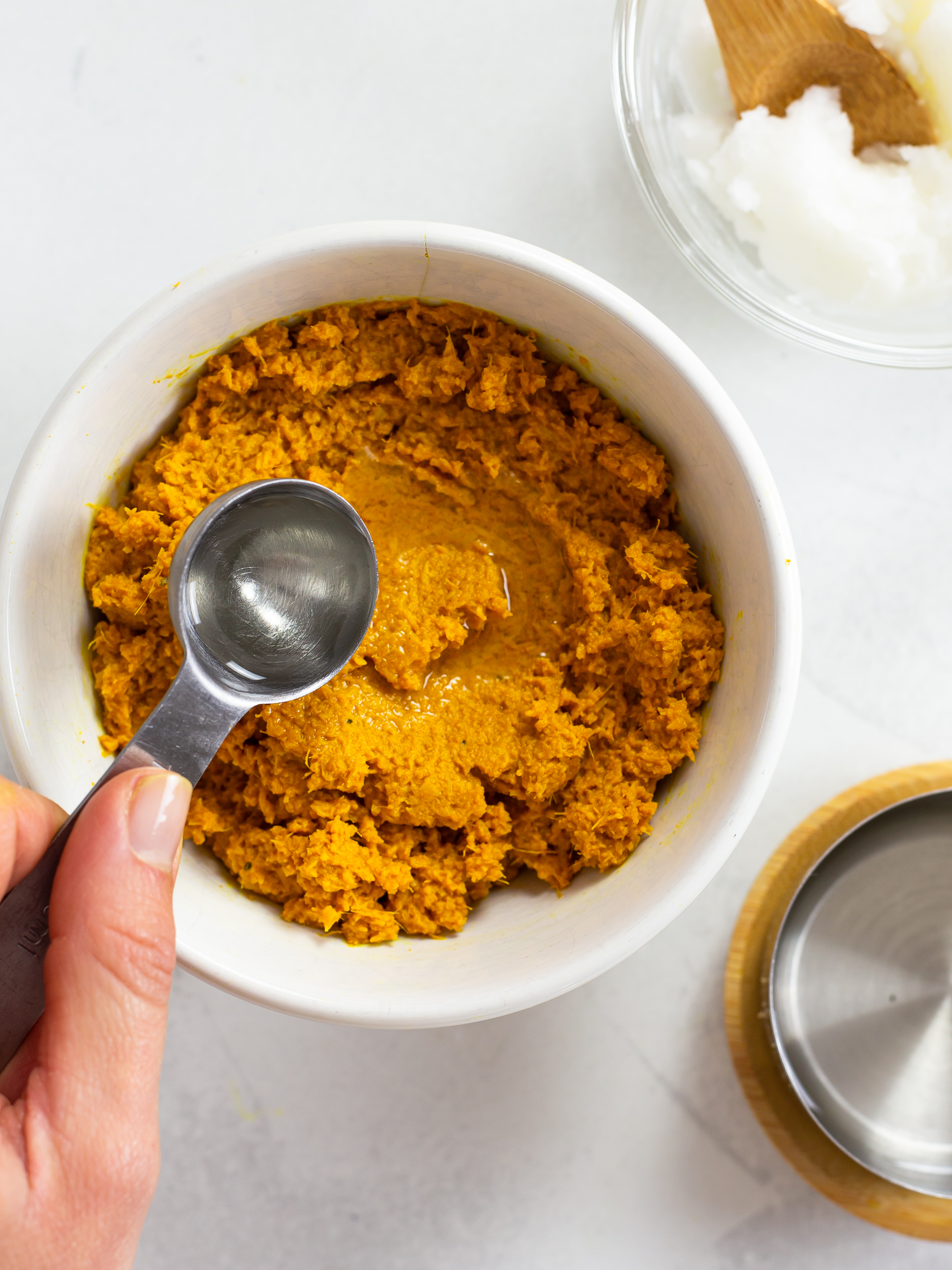
step 5
Store the golden paste in a sealed jar or container in the refrigerator for up to 10 days.
To use, stir 1/2 to 1 ½ teaspoons of turmeric paste into curries, soups and sauces, or hot beverages like tea and lattes.
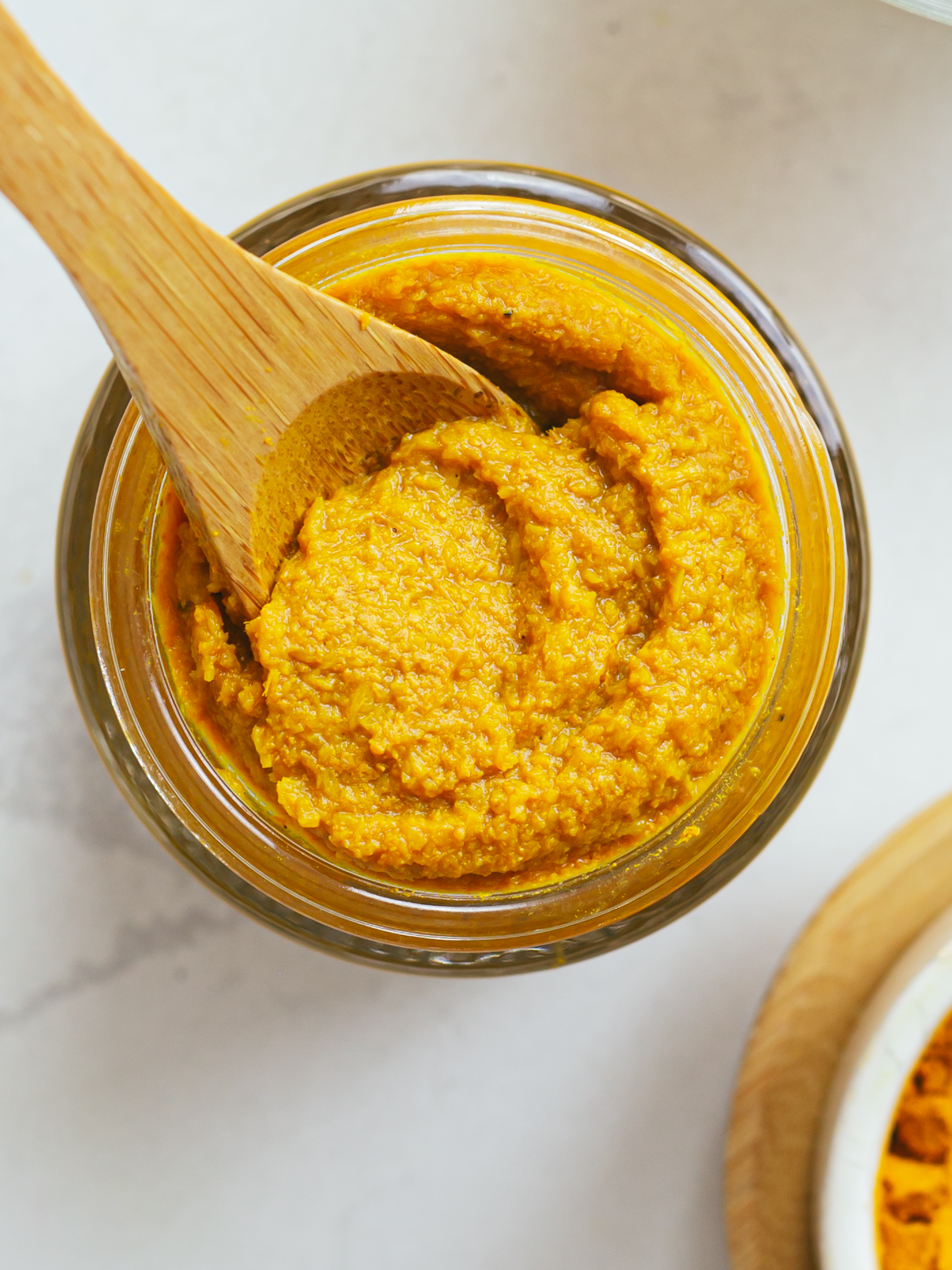
tips
-
The standard ingredients make two small pots of paste: you can use one to make lattes, adding cinnamon, cloves and cardamom to taste, and the other to make curries with garlic, chillies and cumin.
-
You can freeze the paste in ice cube trays for 3 months: fill each ice cube cell with a teaspoon of paste and top up with water.

